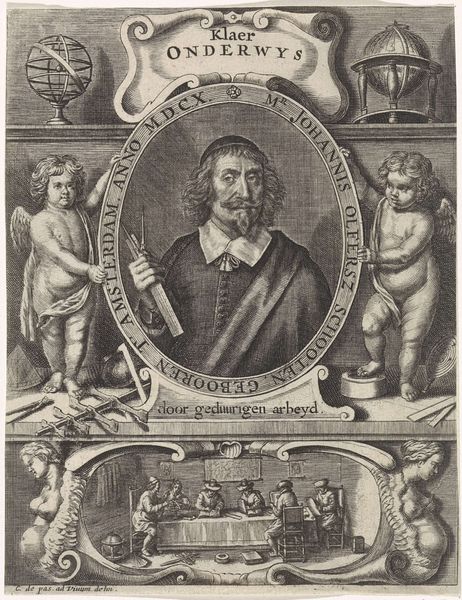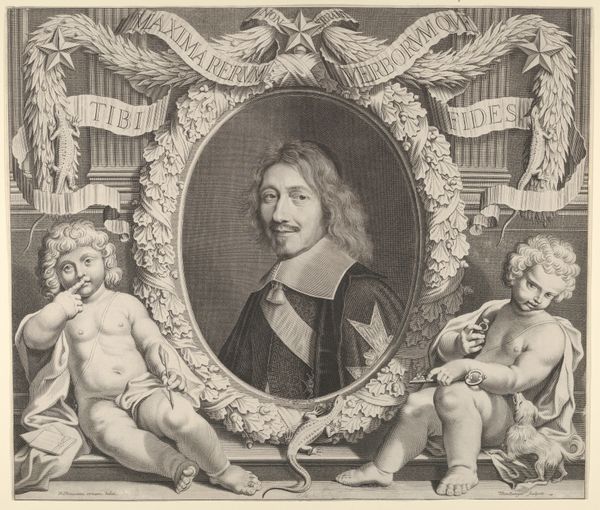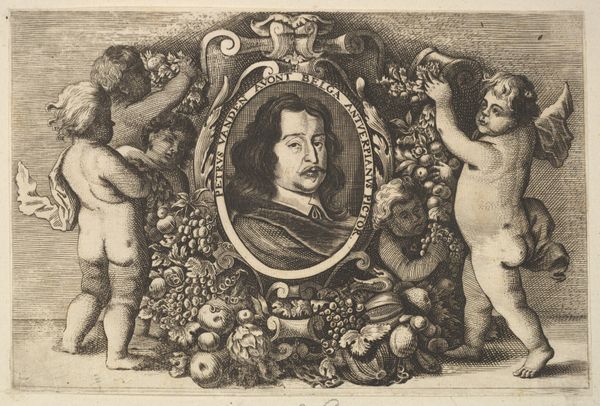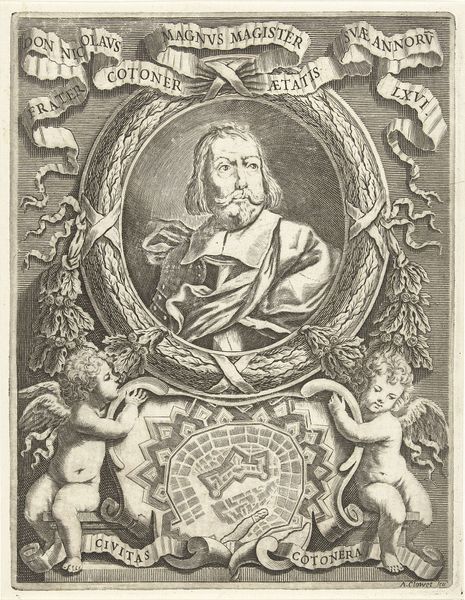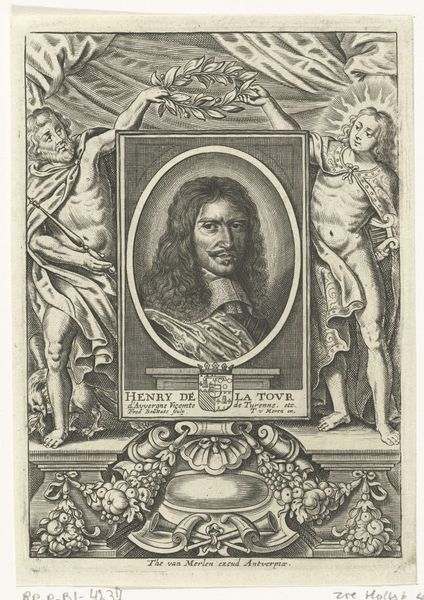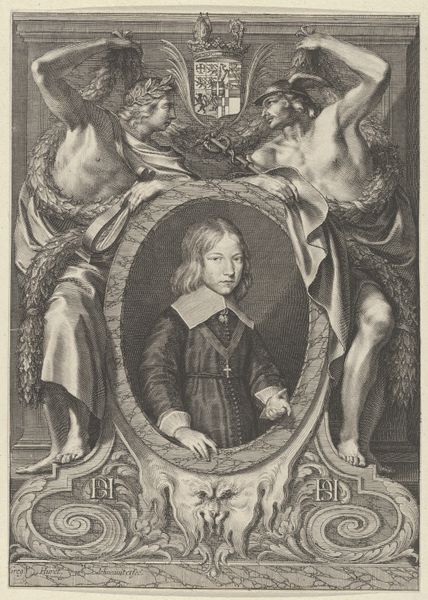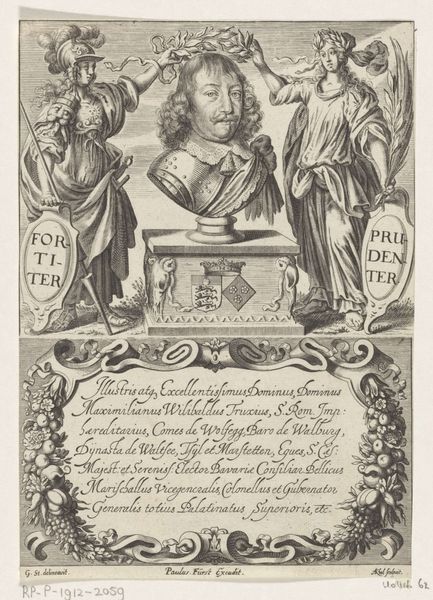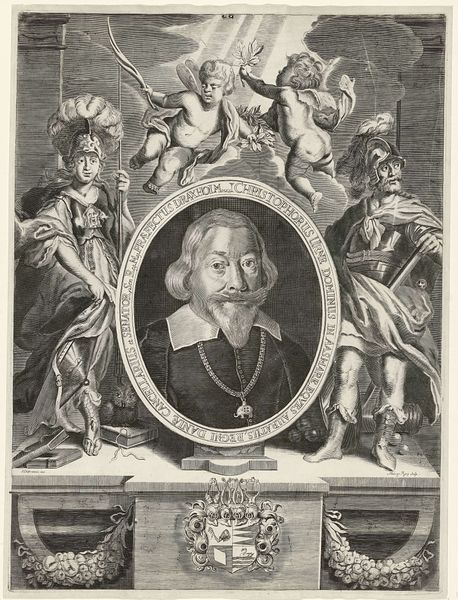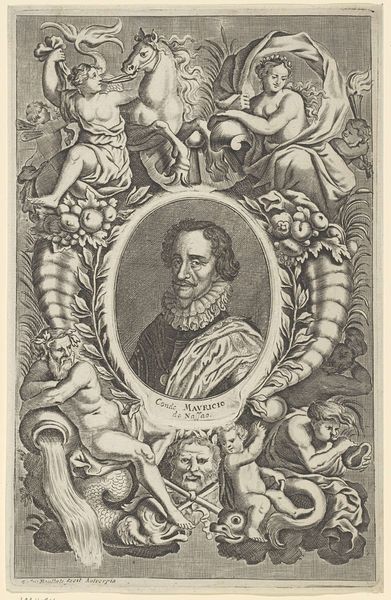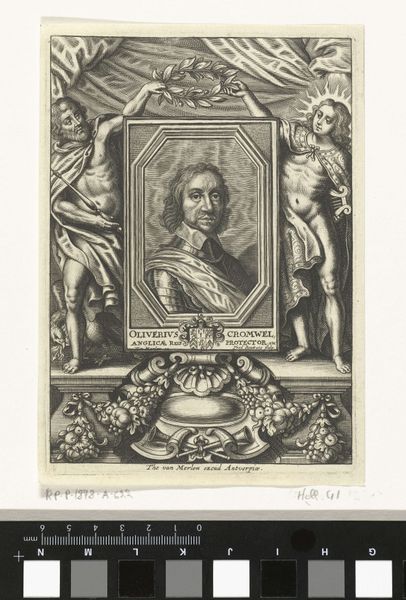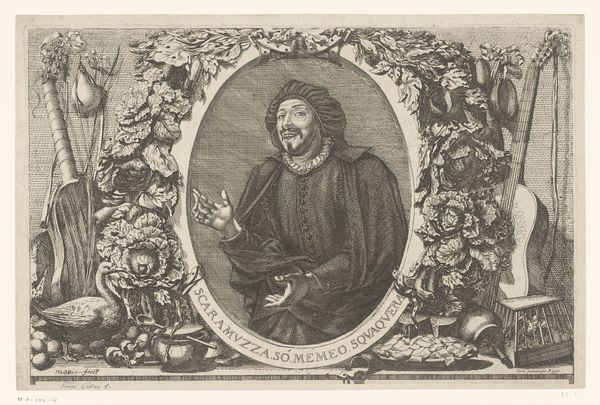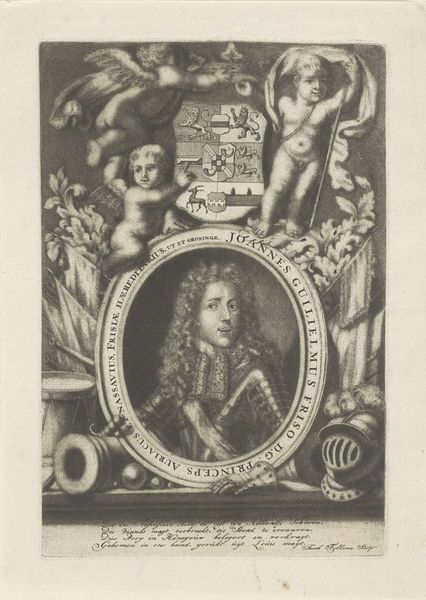
#
pencil drawn
#
toned paper
#
facial expression drawing
#
light pencil work
#
pencil sketch
#
junji ito style
#
pen-ink sketch
#
pen work
#
tattoo art
#
pencil art
Dimensions: height 127 mm, width 208 mm
Copyright: Rijks Museum: Open Domain
Curator: This is a portrait of Georg von Ettenhard, created between 1646 and 1699 by Wenceslaus Hollar, and it's currently held at the Rijksmuseum. Editor: It has a certain weight despite its delicate line work. All those cherubic figures and garlands surrounding a rather stern-looking gentleman... It's quite a contrast. Almost unsettling. Curator: Hollar was known for his detailed etchings and engravings. The presentation speaks to a tradition of visually conveying status and power. The inclusion of cherubs implies a sense of importance but also perhaps an association with purity or divine favor. Consider the context: The image, filled with symbols, circulated among particular social networks as markers of status and political alignment. Editor: So, not just about aesthetic beauty, but visual cues to communicate social standing and affiliations? Looking closely, I wonder how Georg himself viewed this representation. It places him within layers of symbolism, possibly not entirely of his choosing. Curator: Precisely. This image tells us about the society that produced and consumed it. Von Ettenhard’s service within the Spanish court granted him particular privileges and shaped his image and legacy within complex political and social contexts. Hollar worked for aristocratic patrons, including the exiled English royal family and wealthy collectors and used these opportunities to craft complex iconography related to political and courtly affairs. The "Spanish" in the lettering implies a particular alignment as well, and the children reinforce the need to see the image as propagandistic. Editor: It does raise interesting questions about the control individuals had over their own representations in the early modern era. And what roles artists and the institutions, or powerful families, played in shaping those narratives, like how certain images are designed to impress and reinforce a particular kind of power structure. It's not just a likeness, it’s a constructed identity embedded in a complex web of politics and patronage. Curator: Absolutely. Images are never neutral, especially when they represent figures with any political presence. Even simple choices are, by definition, socially or ideologically laden and speak to an environment of reception within established traditions of consumption. Editor: Something to definitely think about. Thanks for unraveling this a little for me today. Curator: My pleasure; it is these layered elements that compel continued investigations into imagery’s cultural and social influences.
Comments
No comments
Be the first to comment and join the conversation on the ultimate creative platform.
